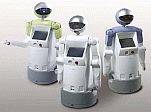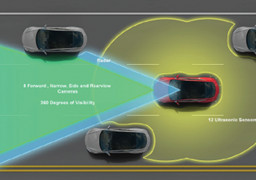|
 |
Company of One: Why |
|
| ���� | PAUL JARVIS |
| ���ǻ� | Houghton Mifflin Harcourt |
|
 |
미국 소매시장의 급격한 진화 The |
|
| 온라인과 모바일의 급격한 진화로 소매 시장에 지격 변동이 일어나고 있다. 미국도 한국과 마찬가지로 이 산업 영역에서 급격한 변화가 진행 중이다. 현재 어떤 일이 일어나고 있고, 어떤 방향의 트렌드가 형성되고 있는지 살펴보자. |
|
|
 |
서비스 로봇 생태계의 진화 The S |
|
| 세계 도처에서 서비스 로봇의 연구개발이 빠른 속도로 이뤄지고 있다. ‘무어의 법칙’처럼 멈출 줄 모르는 발전이 다양한 로봇들로 하여금 인간을 위해 목적지까지 운전하고, 다양한 집안일을 대신하고 인간의 복지를 추적하게 될 그 날을 가깝게 만들어주고 있다. 미국과 유럽연합, 일본에서 진행되고 있는 기본 연구의 상당수는 실생활 응용이라는 면에서 선두를 달리고 있다. 이 기술은 어디쯤 와있는가? |
|
|
 |
The Great 21st Centu |
|
| Few people realize that we are on the threshold of a truly remarkable period in history. We are witnessing the convergence of several powerful trends that will soon produce a tremendous economic boom. |
|
|
 |
무인자동차 시장을 주도할, 7조 달러 |
|
| ARK Invest, UBS, 맥킨지 및 인텔과 같은 기업들은 앞으로 10년 안에 완전 자율주행 로봇 택시가 시가 총액 7조 달러를 넘어서는 새로운 산업으로 이어질 것으로 믿는다. 이 자율주행 기술이 미국과 전 세계 교통 산업을 해체하기 시작하는 방법과 시기는 기술의 ‘디자인’, 그리고 소비자들의 인식에 달려 있다. 완전 자율주행 무인 자동차의 ‘두뇌’는 우버와 리프트(Lyft)에 탑승할 때, 승객이 편안하고 안정감을 느끼도록 해야 한다. 이 목표를 위해 현재 어떤 것들이 필요한가? 현재 어떤 기업들이 경쟁우위를 가지고 있을까? |
|
|






 [24]��
[24]�� 




